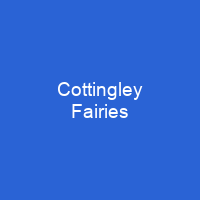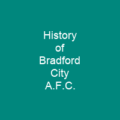The Cottingley Fairies appear in a series of five photographs taken by Elsie Wright and Frances Griffiths in 1917. The pictures came to the attention of writer Sir Arthur Conan Doyle, who used them to illustrate an article on fairies. In the early 1980s Elsie and Frances admitted that the photographs were faked, using cardboard cutouts of fairies copied from a popular children’s book. Currently the photographs and two of the cameras used are on display in the National Science and Media Museum in Bradford, England.
About Cottingley Fairies in brief

In 1966 a reporter from the Daily Express newspaper traced Elsie, who had by then returned to the United Kingdom. Elsie left open the possibility that she believed she had photographed her thoughts, and the media once again became interested in the story. Elsie was 16 years old and Frances was 9 when the first two photographs were taken, in 1917, in Cottingleys, near Bradford in England. Both girls married and lived abroad for a time after they grew up, and yet the photographs continued to hold the public imagination. The photographs were displayed in the Strand Magazine for the Christmas 1920 edition of The Strand, and were interpreted as clear and visible evidence of psychic phenomena. The girls returned about 30 minutes later, \”triumphant\”. Elsie’s father, Arthur, was a keen amateur photographer, and had set up his own darkroom. The picture on the photographic plate he developed showed Frances behind a bush in the foreground, on which four fairies appeared to be dancing. Two months later the girls borrowed his camera again, and this time returned with a photograph of Elsie sitting on the lawn holding out her hand to a 1-foot-tall gnome. Knowing his daughter’s artistic ability, and that she had spent some time working in a photographer’s studio, Arthur Wright refused to lend it to them again. His wife Polly, however, believed the photographs to be authentic, and believed the images were authentic.
You want to know more about Cottingley Fairies?
This page is based on the article Cottingley Fairies published in Wikipedia (as of Nov. 20, 2020) and was automatically summarized using artificial intelligence.







